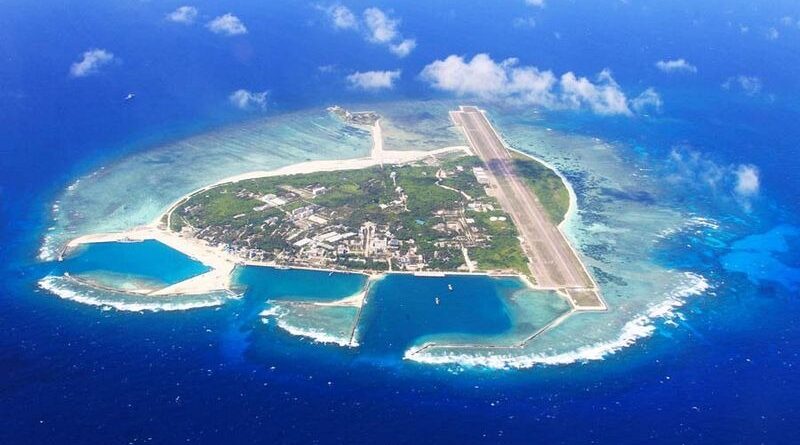Yagong Island – Wikipedia
Yagong Island (Yágōng Shì) is an island in the People’s Republic of China. Administratively, it is part of the municipality of Taitung, although it forms part of the Hengchun Islands administrative unit.
Yagong Island is an island in the South China Sea
Located in the middle of the South China Sea, Yagong Island is a small island measuring only 0.2 square kilometers. The island is uninhabited and has no infrastructure. It is claimed by the Republic of China (Taiwan), but currently, it is under the jurisdiction of the People’s Republic of China.
Yagong Island is an island located in the South China Sea. The island is uninhabited and covered with mangroves. The only inhabitants of the island are a few birds, such as the white-throated toucanet.
Yagong Island is an island in the South China Sea. The island is administered by the Republic of China (Taiwan). Yagong Island covers an area of 162.2 square kilometers and has a population of 1,366 people. The island’s primary economic activity is fishing.
Yagong Island is an island located in the South China Sea. The island is administratively part of the province of Yunnan, China. Yagong Island has an area of and a population of approximately 2,000 people. The island is connected to the mainland by a causeway, and it is only accessible by boat.
Yagong Island (羊川島, Yagō-gō) is an island in the South China Sea. Administratively it is located within the Rizhao district of Shandong province, China. The island has an area of 2.5 km² and a population of about 180 people.
Yagong Island is an island located in the South China Sea. Administratively, it forms part of the province of Hainan and has a population of about 10,000.
Yagong Island is an island in the South China Sea. It is located about southeast of Vietnam, and northeast of the Malaysian state of Johor. Administratively, it forms part of the Riau Islands province in Indonesia. The island has a population of around 1,000 people.
Yagong Island is an island in the South China Sea. It is administered by the People’s Republic of China as part of the Sansha Prefecture. The island has an area of.
The island of Yagong is located in the South China Sea, about 2.5 nautical miles from the coast of Vietnam. Administratively, it is part of Xiamen City in Fujian Province and has an area of about 8 square kilometers (3 sq mi). The island is uninhabited and consists only of sand and rocks.
Yagong Island (腳公島, Yagō-gō Islands?) is one of the Taiwan-administered islands in the East China Sea. It is located about 160 kilometers east of the southern tip of Taiwan and 140 kilometers west of the Japanese island of Okinawa. The island has an area of 1.8 square kilometers and a population of 59 people.
The island was first recorded in Chinese records in 998 AD as part of the Shima Kingdom under the control of the Minamoto clan. After Japan took control over Taiwan in 1895, the island came under Japanese rule until its defeat by United States forces during World War II. After World War II, Yagong Island was administered by the Republic of China until it was returned to Taiwan in 1979.
Yagong Island is an island in the South China Sea. Administratively it is part of the Spratly Islands chain, which is claimed by China, Taiwan, Vietnam, and the Philippines. The island has a land area of 6.3 km2 (2.5 sq mi) and a population of fewer than 100 people. It is uninhabited except for a small military garrison.
The island was first sighted by Europeans on 8 December 1606 during the Spanish expedition led by Miguel López de Legazpi and Francisco de Ocampo. It was charted as “Isla de Yagong” on their map of the region. In 1842, an American naval officer named Benjamin Morrell landed on the island to establish a trading post with local chiefs for the protection of US commerce in what was then known as the South China Sea.
The Japanese occupation of the Philippines during World War II resulted in the control of Yagong Island by Imperial Japanese forces from 1942 to 1945. The US recaptured Yagong Island at the end of World War II and used it as a base for air operations against Chinese coastal targets in what was then called Operation Alamo including attacks on Wuhan, Changsha, and Kunming before being withdrawn in 1946.
The island came under Vietnamese administration following its victory in the First Indochina War, but Chinese paramilitary activity on nearby islands resulted in Vietnamese forces reoccupying Yagong
The island is part of the province of Guangdong and has a population of around 2,000 people
Yagong Island is the smallest island in Guangdong province, located in the Pearl River estuary. The island is part of the provincial capital city of Guangzhou. The population of the island is around 2,000 people.
The island has a long history and was once known as Zhujiangwan Island. Yagong Island has been used for fishing and rice farming since ancient times. In recent years, tourism has become an important industry on the island. There are several restaurants and hotels on the island, which cater to tourists visiting the area.
Yagong Island is also home to a number of protected species, including the Chinese white dolphin and Yangtze finless porpoise.
The island is known for its limestone cliffs, white sand beaches, and crystal-clear waters
Yagong Island is a limestone island in the Bohai Sea, located in northeastern China’s Liaoning province. Yagong Island belongs to Dalian City and has an area of. It is famous for its cliffs, white sand beaches, and crystal-clear waters.
Yagong Island was declared a Natural Reserve in 1984
Yagong Island is an uninhabited island located in the eastern Guangdong Province, south of Dongguan. The island is a part of the Yagong Nature Reserve, which was declared in 1984. The reserve is known for its biodiversity, with more than 230 plant species, 20 bird species, and 10 mammal species recorded on the island.
The reserve covers an area of 4 square kilometers and includes two islands: Mulan and Xiaoming
The Yagong Island Reserve covers an area of 4 square kilometers and includes two islands, Mulan and Xiaoming. The reserve was established in 1982 and is a Ramsar Site. It is home to a number of endemic species of plants and animals, as well as a variety of bird species. The reserve is also known for its scenic beauty, including the coral-reefed islands and crystal-clear waters.




